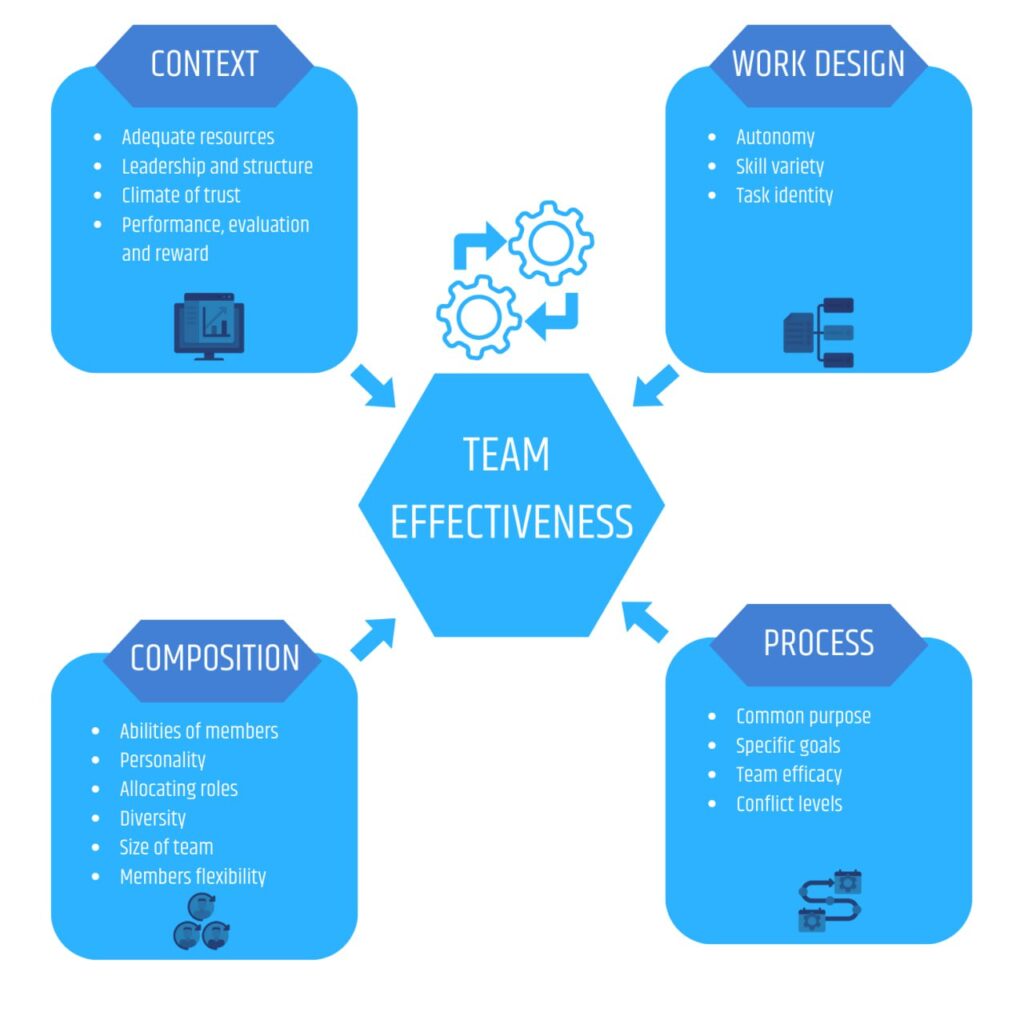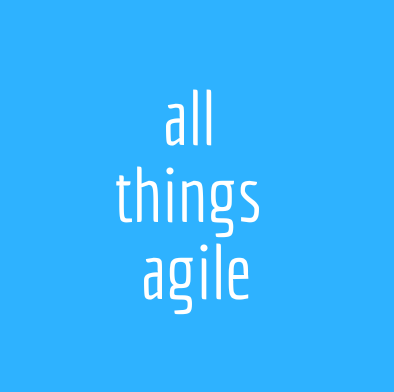
Have you been a part of a great team where everything just seemed to work? Or on the flip side, have you been part of a team that is full of conflict and unable to achieve results? The nature of teamwork and effective teams is not obvious, but there are models that try to explain how things could happen positively.
Today we are going to explore 5 team development and effectiveness models that are solution focused. Any team model can be helpful for you, and some will work better in different circumstances. They are not an exact science and instead should be used to explore how it can help you propel your team forward.
If you’d rather watch a video than read, check out my Youtube video on this topic:
Table of Contents
ToggleModel 1: Tuckman Model

The Tuckman Model consists of 4 stages of team development. A fifth stage was actually added some time ago that addresses the dissolution of a team, as a reminder that any mission can become outdated or be completed and what happens after.
Stage 1: Forming – People get to know each other and there is the excitement of starting.
Stage 2: Storming – People start to work together and understand their differences, but conflict may arise as a result.
Stage 3: Norming – People understand they have different ways of doing things but can compromise and work together
Stage 4: Performing – The processes are refined and there is a shared motivation. The teams look more like one powerful unit.
This model is great because:
- It explains the journey of people working together and that they can become a team over time.
- You can use it with the teams themselves to help them self-diagnose or oversee what their journey looks like. It can be a nice activity to ask your team to think about the signs they might recognize in each step, what kinds of questions to ask themselves, and things they should pay attention to in order to transition towards performance. Ex. How can we storm in a more peaceful/respectful way? How are we going to make sure we are not just getting comfortable and push towards performance?
- For the leaders, it reminds us that teams won’t reach success overnight.
Remember, this model is not linear. Think about the stages in a spiral where you go through all stages a little bit all the time. It is evolving.
Model 2: Robbins and Judge

The Robbins and Judge Model isn’t my favorite, but I appreciate that it calls out team composition as a key element for effective teams.
The 4 dimensions are:
- Context: The team has a climate of trust, adequate resources, performance reward system, and effective leadership and structure
- Composition: Have the right people joined the team? It is about their skills, but also their personalities and roles
- Work design: Giving the right work to the right composition creates a cycle
- Process: The process that the team uses to achieves its goals, including committing to a common purpose, managing conflict, managing how the desired outcome can be reached, and accountability
This model offers a great opportunity to ask the leaders what kind of team they are dreaming of. It allows you to design the team – yes, you should be designing your team. They are not formed by chance.
The best way to use this model is to ask leaders questions related to each of the 4 elements:
- Who would be the ideal people in this team?
- What kind of work would they be doing?
- What is it that they need to believe as a team to be successful?
- What should they organize themselves around and how?
This allows for a more intentional team design.
Model 3: T7 Model

The T7 Model gets its name from the 7 elements it describes, all starting with the letter T. 7 is a lot of dimensions in my opinion, but in the context of an effectiveness team model, you can construct a very nice spider chart to gauge team health.
The model divides 5 Ts in to internal factors and 2 Ts as external factors.
Internal factors are more self-explanatory:
- Trust – Trust among team members
- Talent – The skills to do the job
- Thrust – What propels the team forward
- Task – Separating the skill to do the work from the ability to do it
- Teaming – The ability to function as a team
External factors:
- Team support – How well the organization supports teamwork and the mission of the team
- Team leader fit – Whether the leader works well with their team. Includes the effectiveness of the leadership as well as the interpersonal elements of that leader
This model is great because it calls attention to the external factors that can influence a team.
If you are interested in using this model with a team, a spider chart is great. You can add a few questions per dimension or have people rate the dimensions on a scale of 1-10. This will help you see where they need support or what is lacking. It can be a humbling model.
Model 4: GRPI Model
The GRPI Model is a team effectiveness model suitable for teams that are struggling with lack of direction or unable to hit their goals. It is good for self-diagnosing and for finding solutions forward.
It is simple. Each of the letters in the acronym stands for one of the dimensions:
Goals – Clear objectives and directions are necessary
- Roles – Responsibilities of each team member must be clearly understood by everyone
- Procedures – Processes and systems for successful operation of the team
- Interpersonal relationships – Every team member must have a relationship with other team members, trust, and communication
The dimensions are self explanatory, so compared to the robbins and judge, this one is clearer and simpler.
Use the 4 quadrants in this model to try to diagnose the team and frame conversations. Are the goals/mission clear? Can the team communicate it easily? Are there any balls being dropped? Is everyone clear on their role? Use these kinds of questions to see what areas are lacking at any given time.
Model 5: Hackman Model

The Hackman Model consists of 5 elements. It is great because it talks about the need for expert coaching for team success.
The 5 elements are:
- Being a real team
- Enabling structure
- Compelling directions
- Access to expert coaching
- Supportive context
It looks like some of the other models, but it emphasizes access to a mentor and coach when teams are in need. It implies that teams have the maturity to ask for help to up their performance.
Use it similarly to other models.
Final Words on Team Models
There are many more models out there and you should pick whatever model works for you. To help you select a model, ask yourself these questions:
- Is this model more appropriate for a leadership conversation or is it something you can use in work sessions with the team?
- Is this model allowing the teams to do some self-gauging towards performance?
- Does this model help me or the team identify dysfunction and have a dialog around it?
- Is this a model more suited for teams in the beginning of their journey? If so, how can it be used as a guidepost for their progress?
If you are interested in learning about how to coach for team development and success, check out my Agile Coaching Program! It’s a month-long course of learning by doing! We have recently amped up the conflict navigation, team development, and agile principles in practice areas of the course so it is truly better than ever. In addition, we are proud partners with ICAgile so you will receive a highly recognized certification upon completion that will set you up well for a career as an agile coach.




